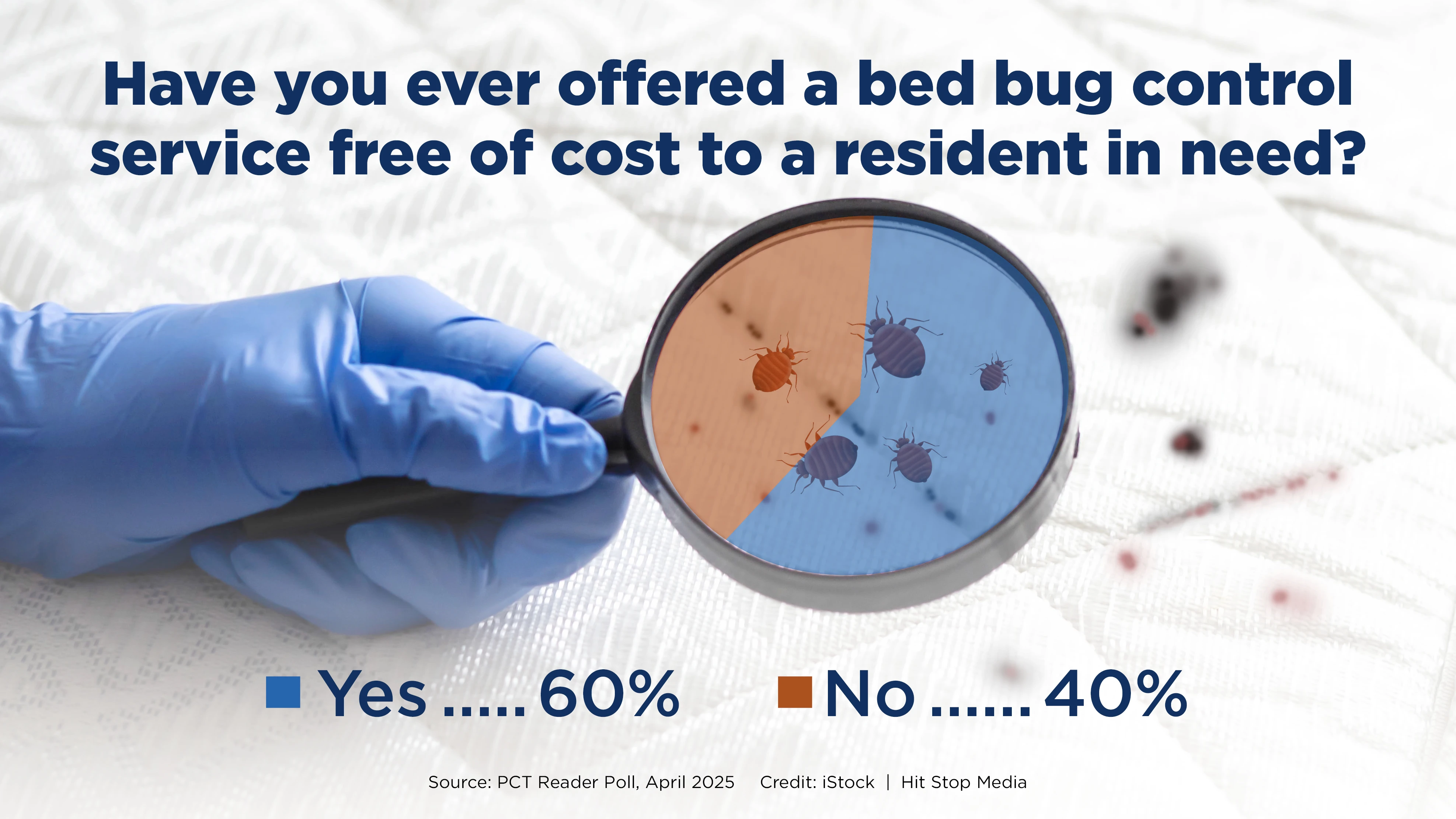To the lazy hunter, the woods are always empty." — E.O. Wilson.
When in the field with pest professionals, I sometimes hear a technician lament, "I’ve been doing this building for six years. Nothing much changes here. The same layout of the building, the same person who signs my service ticket, the same mechanical mouse traps, exterior bait stations and insect sticky monitors in the same place. Same client, same routine, month after month."
Have you ever heard yourself murmuring this sentiment? When you perform a similar type of service on the same buildings over a long period of time, you may begin to perceive a route as routine. But a pest management route is anything but routine.
The fact of the matter is nearly all urban buildings are dynamic environments. And, relative to pest management operations, "dynamic" is a very important word, defined as: char-acterized by vigorous activity and producing or undergoing change and development.
My point in this discussion is that quality pest management services in urban environments demand of us to be astute whenever we arrive at any of our accounts, be it the first or the 50th service visit. Because although it may be the same building, with the same address, and the same occupants from all the previous visits, little else is likely to be "the same" relative to the "world" of urban pests and their relation to an urban structure. And this applies to both an "ordinary" residence or a "complicated" commercial facility.
THE LIST. For example, here is but a partial list of the different factors that render the structures you service as dynamic environments:
1) With each visit, it may be possible you discover a void, a nook, a cranny or a corner you hadn’t encountered or noticed in previous visits (no person can visually assimilate all the structural elements of any account during any one or a couple of visits). Structural engineers estimate that once a building is completed, we no longer have access to about 50 percent of the building.
2) Urban structures are subject to periodic remodeling, add-ons and structural changes.
3) New utility lines or systems are installed creating new chases or new holes.
4) Deterioration and shifting occurs to walls, floors and ceilings, which in turn creates new holes, new cracks and new pest entry routes.
5) Deterioration or trauma occurs to plumbing lines creating leaks. Fresh water is highly conductive to attracting pests of all types.
6) Lapses in cleaning practices create food spillage on the ground and attract rodents, birds and insects to the premises.
7) The weather changes causing changes in local pest populations. For example, the first few cold nights of the autumn often triggers "field mice" to enter buildings seeking protection from the cold. Or, during heat waves and droughts, pests may seek the cool air conditioning of buildings, or forage about seeking moisture and water.
8) Trauma to peripheral environments displaces established animals (e.g., nearby new construction projects and work on sewers or streets may displace rodents and wildlife to your clients’ premises).
9) Landscaping practices attract or harbor exterior foraging pests on a periodic basis.
10) People traffic to and from buildings cause the openings of people doors, delivery doors, shipping/receiving doors, attached garage doors, self-opening doors to super stores and so forth. When doors open, favorable temperatures and food odors exit and attract pests. Or the simple opening of a door allows pests an opportunity to enter. Over repeated usage, a door that was once in good repair and closing tightly becomes worn and contains gaps at the base.
11) Items of all kinds are delivered into a structure. This can range from a single piece of furniture into a home to thousands of "deliveries" occurring at a local food store on a monthly basis.
DON’T BE COMPLACENT. It doesn’t mean the presence of pests is what makes the "woods" productive. It may be that since your last visit, the basement of the nursing home now has two dry drains which need to be re-charged to prevent pests from accessing the building from the drains. Or the residential house now has tree branches touching the roof allowing roof rats, tree squirrels and carpenter ants direct access. These findings are of high significance in providing quality pest management services to your client and they are no less important than discovering a mouse or two has moved into the building.
Each and every time you approach any building you service, no matter how many times you have serviced it in the past — once or 100 times — it is only the "same ole’ same ole" if you yourself reduce it to that status.
E.O. Wilson couldn’t have been more right on about the woods. Your clients’ urban structures and immediate exterior environments — whether they are residential or commercial — are the woods. Go in each and every time as if it were your first time. Because whether you realize it or not, the dynamics of urban environments transforms each or your service visits back to a first time, each time. Be alert. Be astute. Be observant. After all, they are your woods. Rarely should they be found empty.
The author is president of RMC Pest Management Consulting and can be reached at rcorrigan@giemedia.com or 765/939-2829.

Explore the April 2005 Issue
Check out more from this issue and find your next story to read.
Latest from Pest Control Technology
- Target Specialty Products, MGK Partner for Mosquito Webinar
- Cockroach Control and Asthma
- FORSHAW Announces Julie Fogg as Core Account Manager in Georgia, Tennessee
- Envu Introduces Two New Innovations to its Pest Management Portfolio
- Gov. Brian Kemp Proclaimed April as Pest Control Month
- Los Angeles Ranks No. 1 on Terminix's Annual List of Top Mosquito Cities
- Kwik Kill Pest Control's Neerland on PWIPM Involvement, Second-Generation PCO
- NPMA Announces Unlimited Job Postings for Members





